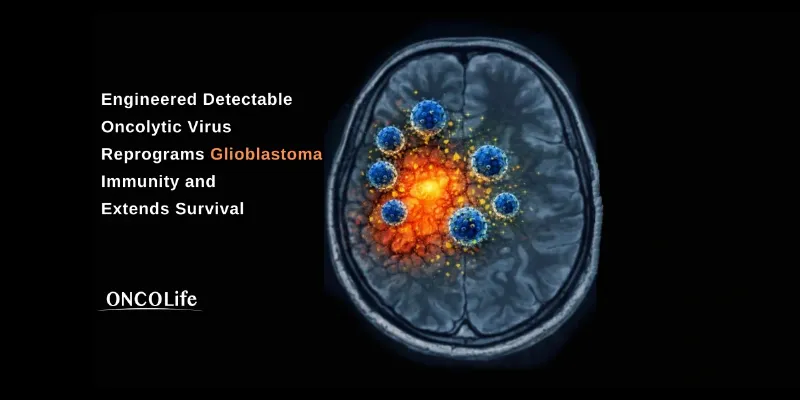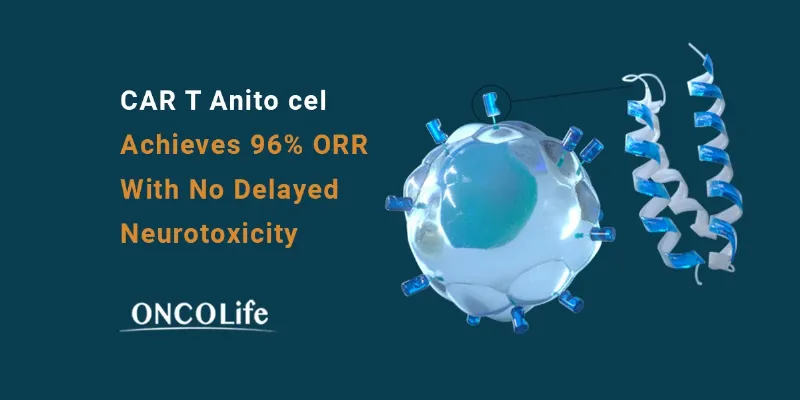Dr. Redkar Unveils the Role of Targeted and Histology-Agnostic Therapies in Cancer

5 April 2024
In an exclusive interview with ONCOLife, Dr. Sanjeev Redkar, Co-Founder of Apollomics, explains the importance of therapies like vebreltinib and uproleselan in cancer treatment, emphasizing the push towards histology-agnostic treatments and the strategic importance of early intervention.
Apollomics focuses on developing novel therapies for challenging cancers, with vebreltinib and uproleselan standing out in their pipeline. Dr. Sanjeev Redkar, emphasizes the importance of moving innovative treatments earlier in the disease progression to significantly impact survival rates, mirroring the ambition of making substantial advances in cancer care and treatment accessibility.
Click the picture to view the PDF version: Pg 18-22.
ONCOLife's Exclusive interview with Dr. Sanjeev Redkar
Vebreltinib is highlighted as a core product in your pipeline. What distinguishes vebreltinib from other c-Met inhibitors currently in development or on the market, and how does its mechanism of action offer potential benefits in treating non-small cell lung cancer and other advanced tumors?
Dr. Redkar: Cancer is incredibly diverse, with significant variations in five-year survival rates across different types. While prostate and breast cancers show high survival rates of over 90%, and testicular cancer nearly 100%, others like non-small cell lung cancer (NSCLC) lag behind with around a 20% survival rate. Despite advances, including the introduction of immune checkpoint inhibitors, the improvement in survival for NSCLC has been modest, inching from 24% to about 30%, not nearly as impactful as in other cancer types.
This disparity underscores the necessity of targeting NSCLC more effectively, acknowledging its heterogeneity even within its category. Apollomics’ focus is on a specific subset of NSCLC influenced by the c-Met pathway, which is crucial for the survival and metastasis of cancer cells.
This pathway can be deregulated in various ways, including mutations, amplifications, and fusions, contributing to uncontrolled cancer growth. Targeting these specific dysregulations is vital, and while there are treatments for MET exon 14 mutations, gaps remain, particularly for amplifications and fusions.
Our drug, vebreltinib, is undergoing clinical trials targeting these c-Met related aberrations in NSCLC, offering a potential solution where current options are limited. Vebreltinib is designed to address not only MET exon 14 mutations but also c-Met amplifications and fusions, with the unique advantage of penetrating the brain, thus expanding its application to glioblastoma multiforme. This focus on precision medicine, targeting specific molecular and genetic profiles, is crucial for advancing treatment in NSCLC and other cancers, reflecting Apollomics’ commitment to addressing unmet needs in oncology.
Apollomics’ Pursuit of Against Hard-to-Treat Cancers
With uproleselan completing enrollment in its Phase 3 bridging study in China, what are the implications of this milestone for AML treatment globally, and how does uproleselan’s mechanism of action address chemoresistance in relapsed/refractory AML patients?
Dr. Redkar: I’m excited to share about a groundbreaking drug we’ve licensed from GlycoMimetics, a leader in glycobiology. This first-in-class E-selectin antagonist, addresses a critical challenge in treating acute myeloid leukemia (AML). E-selectin, that is expressed in the lining of the bone marrow vasculature, helps leukemic cells evade chemotherapy by allowing them to adhere to the bone marrow.
Uproleselan effectively bl-ocks E-selectin, preventing leukemic cells from hiding and disrupting the prosurvival pathways. Phase two trials conducted by GlycoMimetics have shown promising outcomes, including significant rates of minimal residual disease negativity, a key marker of treatment efficacy in AML.
Achieving complete remission (CR) with MRD negativity is crucial, as it’s the closest outcome to a cure for relapsed or refractory AML patients, potentially bridging them to transplant. With over 30 ye-ars of experience developing medicines in leukemias, I understand the challenges and the impact of introducing a novel mechanism like this. We are excited about the trial’s outcomes and potentially introducing uproleselan to patients in China through a randomized, two-arm, placebo controlled bridging trial in relapsed/refractory AML.
Our goal is to advance this treatment from the relapse/refractory setting to frontline therapy. GlycoMimetics’ is collaborating with the NCI Alliance on a Phase 2/3 trial in treatment-naïve AML that could further validate uproleselan’s potential, marking a significant step forward in AML treatment.
Can you discuss the potential for your drug candidates, such as uproleselan and vebreltinib, to be used in combination with other therapies? How do you determine the most effective combinations for different cancer types?
Dr. Redkar: We’re currently exploring this avenue with an ongoing trial combining vebreltinib with an EGFR inhibitor, aiming for efficacy in the first-line treatment setting. Johnson & Johnson’s recent positive results with their EGFR/c-Met antibody underscores the relevance of the cMet pathway, even in first-line setting, suggesting potential adoption avenues for our c-Met inhibitor, especially in combination with EGFR inhibitors.
Our strategy is to prioritize our first monotherapy NDA, while exploring partnerships to leverage combination therapies, particularly with TKIs. Regarding uproleselan, its initial approval seeks combination use, exploiting its unique mechanism of dislodging cancer cells from bone marrow, enhancing chemotherapy’s effectiveness.
GlycoMimetics is developing a second-generation more potent E-selectin antagonist, GMI-1687 (APL-108), which can be dosed subcutaneously and is more suitable for outpatient use, expanding the drug’s applicability across various cancers.
While our primary goal is navigating uproleselan through its first trial successfully, we’re also eyeing potential combinations in other cancers. These efforts underscore our strategic approach to drug development and combination therapy exploration, as we balance resource constraints with the pursuit of innovative cancer treatments.
Could you elaborate on the significance of your partnership with GlycoMimetics for uproleselan, including how such collaborations shape your development and commercialization strategies, especially in the China market?
Dr. Redkar: Our registration trials are nearing completion, setting the stage toward commercialization of our products. Entering commercialization is challenging, involving decisions on target profiles, pricing, and market entry strategies. We’re focusing on building a commercial team in China for uproleselan, capitalizing on the approximately 20 to 25 AML treatment centers in China. Our goal over the next few years is to prepare for the commercial phase in both regions, which will require development of a dedicated commercial team to bring our drugs to market.
What are the biggest challenges you face in the development of new cancer therapies, particularly when it comes to regulatory hurdles, clinical trial design, and ensuring patient safety?
Dr. Redkar: In the realm of developing medicines for cancer, we’re confronted with a paradox. While innovative modalities like targeted therapies and RNA therapies offer hope, they often have to be first tested in patients who have exhausted all other treatment options—those at the very end of their treatment journey. This is crucial for providing options to patients with refractory conditions, as cancer’s adaptability requires continuous innovation to keep up. The ultimate goal is to elevate lung cancer’s five-year survival rate to rival that of prostate cancer, by introducing these treatments earlier in the disease progression.
The FDA’s Project Frontrunner is an promising initiative, acknowledging the need to bring novel treatments in an earlier setting. An interesting example of this challenge is the evolution of EGFR inhibitors; it took nearly 15 years for newer EGFR inhibitors to be utilized in earlier stages of treatment. Our aim, therefore, is not just to test new options in heavily treated patients but to explore how these treatments can be integrated into earlier settings, including adjuvant or even neoadjuvant stages.
Uproleselan has received both Fast Track and Breakthrough Therapy designations from the FDA, as well as Breakthrough Therapy designation in China. How do these designations impact the development timeline and market potential for uproleselan?
Dr. Redkar: Receiving a regulatory designation from agencies like the FDA doesn’t directly affect market potential but significantly boosts our interaction with regulatory authorities. It means faster turnaround times, the possibility of priority review, and potentially lead to faster market access. Both GlycoMimetics and we, when applying to the FDA and NMPA, greatly value these designations as they expedite our discussions and processes, aiding in a swifter market introduction.
Looking at Apollomics’ ambitious agenda in oncology, could you detail the key targets and strategic goals the company aims to achieve in the next five years?
Dr. Redkar: Over the next 5 years, our primary focus remains on vebreltinib’s commercial success, broadening its application beyond late-stage settings into histology-agnostic cancers, a strategy supported by both oncologists and regulatory bodies like the FDA. This approach aims to treat cancers based on genetic mutations rather than the tumor site or origin. We’re exploring vebreltinib in various indications and moving into earlier stages of treatment, especially in combination with tyrosine kinase inhibitors (TKIs) to delay cancer recurrence.
In addition to vebreltinib, we’re advancing a diverse pipeline targeting difficult-to-treat cancers, including a pan-ERB inhibitor for brain metastases and a TKI in phase 1 trials, among other early-stage projects like bispecific proteins and a cancer vaccine. Overall, we are committed to bringing meaningful therapies to patients in need.
Dr. Sanjeev Redkar and the Vision Behind Apollomics
Could you provide us with an overview of your background, including what inspired you to pursue a career in cancer research and some information about Apollomics?
Dr. Redkar: My journey into the world of cancer research and pharmaceuticals is a tale of serendipity rooted in a background of chemical engineering, with a PhD in biochemical engineering from Boulder, and an innate draw towards the life sciences, nurtured by my family’s medical heritage. Starting out in the biotech industry, I was captivated by the complexity in the treatment of cancer.
My early professional years were marked by an eagerness to delve into various facets of cancer treatment, from biology to pharmacokinetics and clinical trial design aimed at designing better medicines. In 1994, I joined Matrix Pharmaceuticals, amid the approval of new chemotherapy treatments like paclitaxel, engaging in the development of improved chemotherapy products.
My 18 years at Astex (later was bought by Otsuka) was a significant journey where I contributed to the launch of five notable cancer drugs, including Dacogen® (decitabine) for myelodysplastic syndromes (MDS) and Nipent™ (pentostation) for hairy cell leukemia and more recently, Inqovi® (decitabine and cedazuridine) for MDS. Two of these drugs, known as epigenetic modifiers, represented a breakthrough from traditional chemotherapy, marking an early foray into a nascent field. This period of my career was characterized by collaborations with exceptional scientists, leading to significant advancements in drug development, including the approval of innovative treatments like Inqovi.
Founding Apollomics, alongside CEO Guo-Liang Yu, was a pivotal moment, allowing me to channel my experience towards addressing unmet medical needs in cancer treatment. Our focus is on developing therapies for challenging cancers, leveraging collaborations and raising substantial capital to advance our promising late-stage clinical pipeline. With exciting candidates like vebreltinib and uproleselan, Apollomics stands at the forefront of introducing novel treatments in oncology, reflecting a journey that blends scientific curiosity with a deep-seated desire to make a difference in the fight against cancer.











Comments
No Comments Yet!